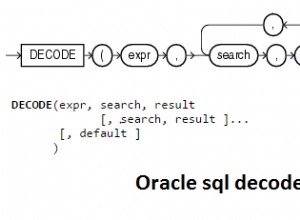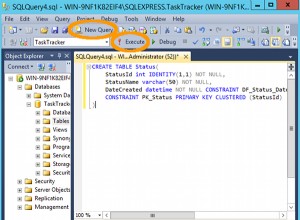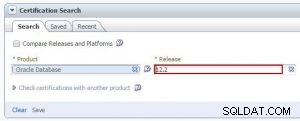Utilisez db.set_isolation_level(n) , en supposant db est votre objet de connexion. Comme Federico l'a écrit ici, la signification de n est :
0 -> autocommit
1 -> read committed
2 -> serialized (but not officially supported by pg)
3 -> serialized
Comme documenté ici, psycopg2.extensions vous donne des constantes symboliques dans le but :
Setting transaction isolation levels
====================================
psycopg2 connection objects hold informations about the PostgreSQL `transaction
isolation level`_. The current transaction level can be read from the
`.isolation_level` attribute. The default isolation level is ``READ
COMMITTED``. A different isolation level con be set through the
`.set_isolation_level()` method. The level can be set to one of the following
constants, defined in `psycopg2.extensions`:
`ISOLATION_LEVEL_AUTOCOMMIT`
No transaction is started when command are issued and no
`.commit()`/`.rollback()` is required. Some PostgreSQL command such as
``CREATE DATABASE`` can't run into a transaction: to run such command use
`.set_isolation_level(ISOLATION_LEVEL_AUTOCOMMIT)`.
`ISOLATION_LEVEL_READ_COMMITTED`
This is the default value. A new transaction is started at the first
`.execute()` command on a cursor and at each new `.execute()` after a
`.commit()` or a `.rollback()`. The transaction runs in the PostgreSQL
``READ COMMITTED`` isolation level.
`ISOLATION_LEVEL_SERIALIZABLE`
Transactions are run at a ``SERIALIZABLE`` isolation level.
.. _transaction isolation level:
http://www.postgresql.org/docs/8.1/static/transaction-iso.html




